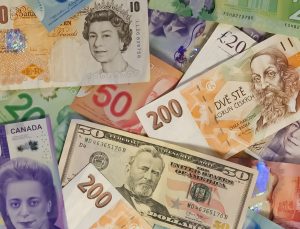The forex market is a dynamic and ever-changing market. One of the most critical aspects of trading forex is identifying trends. Trends are crucial because they show the direction of the market, and traders can use this information to make profitable trades. In this article, we will discuss how to identify trends in the forex market.
What is a trend in forex?
A trend is a directional movement of the price of a currency pair over a period. The trend can be up, down, or sideways. An uptrend is when the price of a currency pair is consistently making higher highs and higher lows. Conversely, a downtrend is when the price of a currency pair is consistently making lower lows and lower highs. Finally, a sideways trend, also known as a range-bound market, is when the price of a currency pair is moving within a specific range.
How to identify a trend in forex?
There are different ways to identify a trend in forex, and traders use different tools and indicators to do so. However, the most popular and straightforward way to identify a trend is by using price action analysis. Price action analysis involves analyzing the price movement of a currency pair without relying on indicators.
To identify a trend using price action analysis, traders look for the following:
1. Higher highs and higher lows – In an uptrend, the price of a currency pair will make higher highs and higher lows. Traders can draw a trendline connecting the higher lows to identify the trend.
2. Lower lows and lower highs – In a downtrend, the price of a currency pair will make lower lows and lower highs. Traders can draw a trendline connecting the lower highs to identify the trend.
3. Sideways movement – In a range-bound market, the price of a currency pair will move within a specific range. Traders can draw support and resistance levels to identify the range.
Traders can also use indicators to identify trends in forex. Some of the most popular indicators are moving averages, MACD, and the Relative Strength Index (RSI).
1. Moving Averages – Moving averages are used to identify the average price of a currency pair over a specific period. Traders use moving averages to identify trends by looking at the slope and direction of the moving average. In an uptrend, the moving average will slope upwards, and in a downtrend, the moving average will slope downwards.
2. MACD – The Moving Average Convergence Divergence (MACD) is a momentum indicator that shows the relationship between two moving averages. Traders use the MACD to identify trends by looking at the MACD line and signal line. In an uptrend, the MACD line will be above the signal line, and in a downtrend, the MACD line will be below the signal line.
3. Relative Strength Index (RSI) – The Relative Strength Index (RSI) is a momentum oscillator that measures the strength of a currency pair’s price action. Traders use the RSI to identify trends by looking at the RSI line. In an uptrend, the RSI will be above 50, and in a downtrend, the RSI will be below 50.
Conclusion
Identifying trends in forex is crucial for traders to make profitable trades. Traders can use price action analysis, indicators, or a combination of both to identify trends. However, it’s important to remember that no single method is foolproof, and traders should always use risk management strategies to protect their trades.





